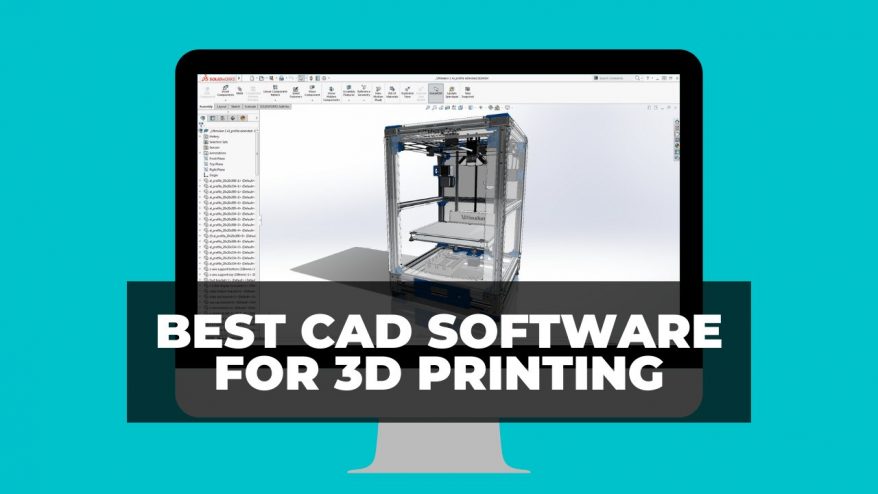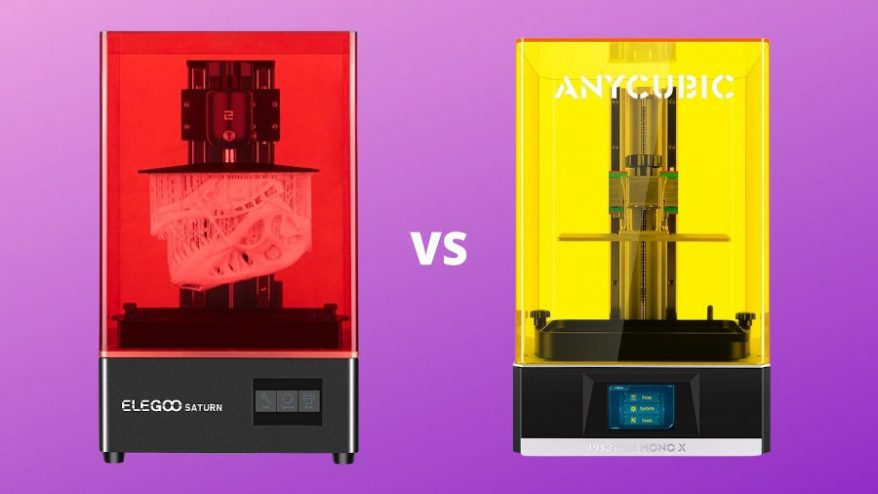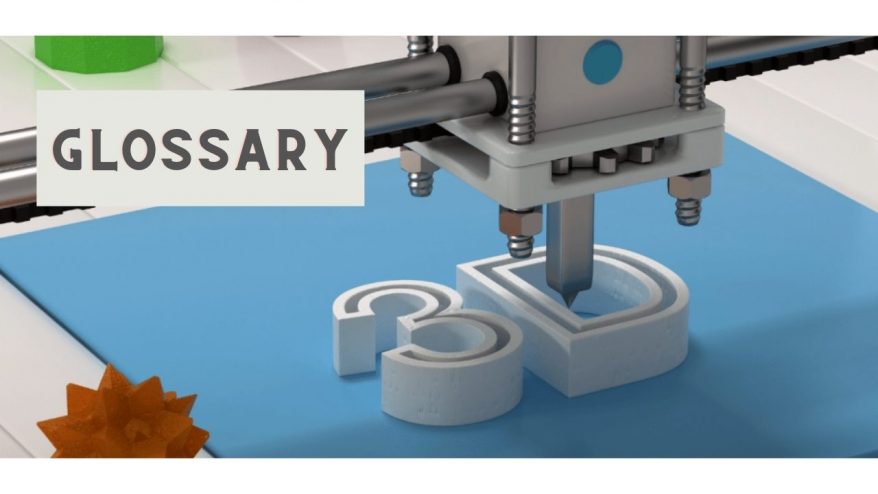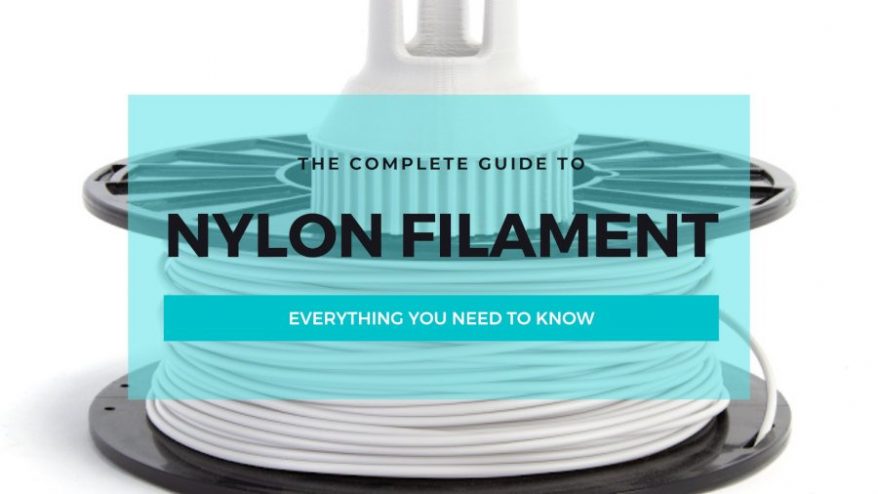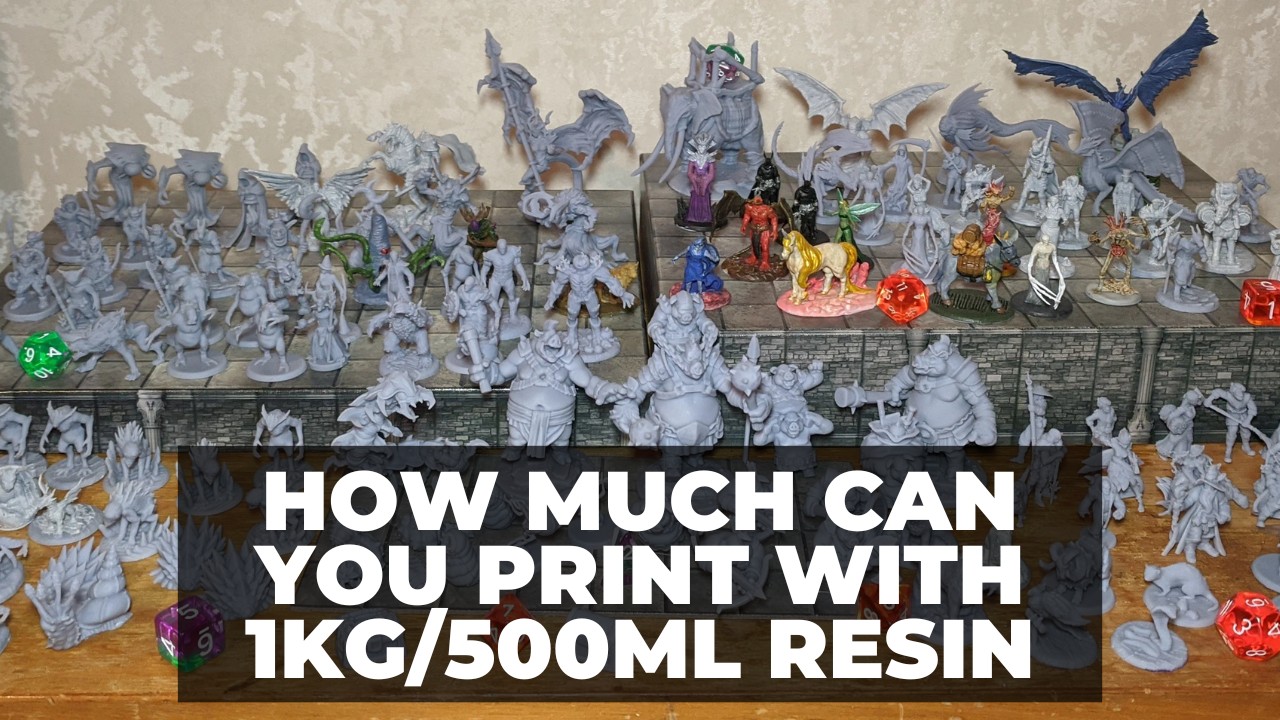
How Much Can You 3D Print With 1L/500ml Resin? (We Calculated It)


At 3DSourced we’ve covered everything 3D printing and 3D since 2017. Our team has interviewed the most innovative 3D printing experts, tested and reviewed more than 20 of the most popular 3D printers and 3D scanners to give our honest recommendations, and written more than 500 3D printing guides over the last 5 years.
When a sealed bottle of resin arrives on your doorstep, it promises hours of creative fun, but looking at it doesn’t reveal much about how much you can print with 1 liter or 500 ml of resin.
Is one enough for your project or are you better off grabbing a multi-pack resin deal to tide you over for a few months?
True to many aspects of 3D printing, how much you can print with 1 liter of resin depends on so many variables, it’s difficult to provide a firm, definitive answer. Everyone’s mileage varies – are you a heavy-duty user that prints multiple batches of miniatures a week or do you fire up the printer a few times a month to complement an occasional hobby?
We can, however, provide a general estimate to help steer you in the right direction, with general estimates for 500ml and 1L bottles of 3D printer resin, as well as tips for making your resin last as long as possible.
How Long Does 1 L of Resin Last?
Based on an average resin STL printer usage of 6.7 ml per hour, a 1 liter bottle of resin will last a little over 149 hours, or just under a week of continuous use. For an average user printing 10 hours a week, a 1 liter bottle of resin could last up to 15 weeks, or 3-4 months.
| Resin volume | Ave usage | How long resin lasts |
|---|---|---|
| 500ml | 3 days continuous usage 10 hours / week 4 hours / week | 74.50 hours 1-2 months 4-5 months |
| 1L | 1 week continuous usage 10 hours / week 4 hours / week | 149 hours 3-4 months 8-9 months |
| 2L | 2 weeks continuous usage 10 hours / week 4 hours / week | 298 hours 6-8 months 16-18 months |
- A 1 liter bottle of resin will last the occasional maker, who uses their printer once a week for 4 hours, roughly 37 weeks – or 8-9 months.
- A 2 liter bottle will last 298 hours or just under 2 weeks of continuous usage, 6-8 months at 10 hours per week, and 16-18 months at 4 hours per week.
- As for a 500 ml bottle of resin, these fall to 74.50 continuous hours (or roughly 3 days), 1-2 months at 10 hours per week, and 4-5 months at 4 hours per week.
However, there’s no firm answer to how long a bottle of resin will last – it depends largely on how often the printer is used, what’s being printed, the size of the prints, and the settings dialed into during the printing process.
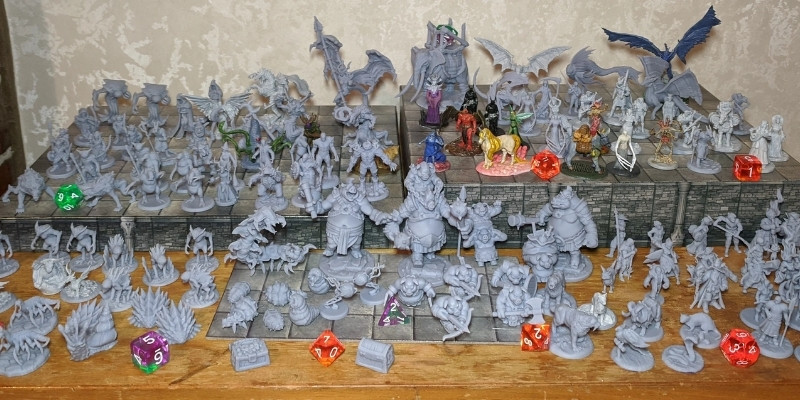
Furthermore, resin printing is different to FDM printing in that it cures entire layers at a time. So, for example, batch printing 15 minis consuming 18 ml overall (1.20 each) takes as long as printing a single one of the same mini. This drastically increases the resin used, but maximizes print time so you end up with more of the finished product.
Nevertheless, an average gives a good idea of how far you can stretch a single 1 liter bottle of resin.
To obtain an average of 6.7 ml per hour, we fired up several popular prints in Lychee Slicer to get their estimated resin consumption and print time using default, standard settings:
| 3D Model | Volume resin consumed per model | Hours |
|---|---|---|
| Death Trooper Keychain | 32.50 ml | 4 hours |
| AmeraLabs Town Calibration Tool | 1.55 ml | 1h30 |
| Chess Bishop | 15.16 ml | 4h30 |
| Ranni Figurine | 80 ml | 6h30 |
| Triarii Mini | 1.20 ml | 3h00 |
Taking the average ml/hour of all 5 models gives up 6.7 ml/hour. Again, this is a generalization for the sake of example, and only a broad estimate.
Your resin consumption will likely change depending on the printer mode, settings like resolution and print speed, how many errors and failed prints you may have to tackle.
But, it’s nevertheless useful to calculate the following.
- 1 hour of printing uses 6.7 ml on average.
- 10 hours of uninterrupted printing uses 67 ml on average.
- 24 hours of uninterrupted printing uses 160.8 ml on average.
- 100 hours of uninterrupted printing uses 670 ml on average.
- 1 week of uninterrupted printing uses 1125.6 ml on average.
Taking all this into account, a 1 liter bottle of resin will last you anywhere from a week to 9 months depending on the size of the prints, frequency of printing, and settings.
If your prints/printer lead to a higher ml/hour consumption, the resin bottle won’t last as long. And, larger prints – large figurines, batch prints, and so on – will consume far more than smaller prints like individual miniatures.
How Much Can You Print With 1 L of Resin

With 1L of resin, you can print roughly 830 miniatures (if we take the Triarii mini mentioned above as a reference, using approx 1.2ml resin), 30 Death Trooper keychains, 645 AmeraLabs calibration towns, 66 chess bishop pieces, or 12 large Ranni figurines.
It’s important to also allow some leeway for errors caused by adhesion issues, poor slicing, and other issues that cause failed prints. As such, we recommend lowering the estimate to each – though by how much depends on your experience with 3D resin printing, ability to troubleshoot problems quickly, and the complexity of the models.
Looking a little closer at the figures above, we can see how we achieved these estimates using the generalized the resin per model consumption established previously:
| 3D Model | Volume of resin consumed per model | Number of printed models per 1L bottle of resin |
|---|---|---|
| Triarii Miniatures | 1.20 ml | 830 |
| Death Trooper Keychains | 32.50 ml | 30 |
| AmeraLabs Town Calibration Tool | 1.55 ml | 645 |
| Chess Bishop | 15.16 ml | 66 |
| Ranni Figurine | 80 ml | 12 |
Taking a different perspective, a single 1L bottle of resin can give you around 149 hours of uninterrupted printing, barring no print failures, spills, or otherwise wasted resin.

A 500 ml bottle of resin will last roughly 74 hours of consistent printing, while a 2 l bottle pushes this up to just shy of 300 hours.
It’s crucial to stress that these figures aren’t set in stone – usage will vary quite considerably depending on the printer, settings, print speed, and whether you’re using supports. However, it gives us a general idea of what to expect from a 1L, 500 ml, and 2L bottle of resin.
Factors That Affect How Long 3D Printer Resin Lasts
Now that we’ve established how much you can theoretically print from a bottle of resin, how do you make resin last longer?
There are several factors to keep in mind that will help you squeeze a few more prints out of each bottle.
Optimize Supports

Although supports are a crucial and unavoidable part of printing the complex and detailed models 3D resin printers excel at, it’s important to optimize their generation to avoid over-using them and by extension wasting resin.
Print orientation is one key component of this. Slicing a model upright invariably requires more supports than angling it so as to only generate supports where needed.
Many makers swear by a 45° angle, though there’s scope for experimentation here and it’s a case of finding a balance between enough supports to ward off failed prints and adhesion issues and being economical about resin usage.
Let Resin Drip Off the Print/Plate Before Cleaning

With a freshly-finished print sitting on the build plate, it can be tempting to scrape it off immediately to clean it in preparation for curing.
But, it’s worth letting it sit for a few minutes to allow excess resin stuck to the print and plate to drip off back into the vat, then using a silicone spatula to remove as much as you can.
Though you won’t get a huge amount of resin this way, it adds up over time, especially if you are a heavy user.
Filter and Reuse Resin
After a print is finished and you’re returning used resin to the bottle, run it through a reusable mesh filter (these are cheap and available on sites like Amazon).
These will filter out any residual semi-cured resin that could potentially cause issues when you reuse the resin for your next print. It’s also worth gently scraping the vat film to remove any semi-cured resin that’s got stuck during the printing process.
As long as the used resin is free of residue, it’s as viable as bottle-fresh resin, so take these small steps to maximize how many prints you get from each bottle.
Hollow Prints

Always hollow out your models in your slicing software before printing. The interior of models don’t need to be 100% filled with resin, especially as most SLA prints tend to be for decorative purposes.
Doing so will save vast amounts of resin over time. This won’t work for all types of prints, though.
For smaller models the savings tend to be minimal and the parts will benefit from the added structural integrity afforded by a filled out interior especially if they have thin peripheral walls and shells. In the same vein, it’s worth including holes in your prints to allow excess resin to run out, which over time saves resin.
Work Slowly and Methodically to Avoid Waste

Resin printing is messy, but you can avoid wasting resin by working slowly and methodically. Much of this comes down to having an appropriate work space and not rushing through each step of the printing process.
For example, something very common is to underestimate how fast resin flows, despite its viscosity, which can lead to spillages when you’re returning resin to the bottle or pouring it into the vat. The resin lost to overflows and splashes builds up over time, but if avoided can stretch a 1L bottle of resin quite a bit further.
How Much Resin Should I Use for a Print?
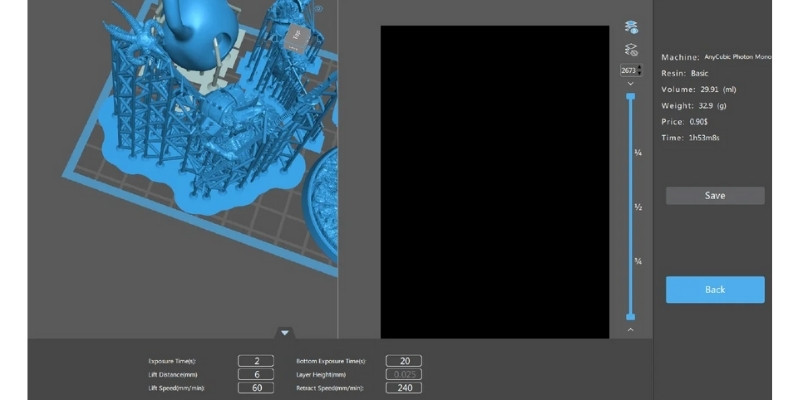
It depends on what you’re printing. We recommend slicing your model then checking the estimates provided by the software, usually an estimate of how many ml are needed to complete the print.
From here, we recommend doubling or even quadrupling that amount to get a sense of how much resin you’ll want to compensate for it moving about and shifting as the plate lifts and lowers.
It’s always better to use more than not enough. As long as you’re not filling the vat tray to the brim, there’s really no harm to adding too much resin. Any unused resin can be filtered and reused so you’re not wasting any.
We recommend filling up the vat tank about halfway for smaller prints, and to the maximum limit marked on the inside of the tray for larger prints. If the tank is looking a little empty halfway through a print, it’s always possible to pour in more resin.
Related articles:
- Resin vs FDM for 3D printing miniatures
- Best Budget-friendly Large Resin 3D Printers Today!
- Top Rated Water-Washable Resin Brands & Printing Guide
- ABS-Like / Tough Resins: Best Brands Reviewed
- Complete Buyer’s Guide to Anycubic Resins
- We Reviewed The Best Wash and Cure & Resin Curing Stations In The Market
- Our List of The Top Rated Resin 3D Slicers For SLA, DLP & LCD
- The Top Glues For Resin Models
- How much can you 3D print per kilo of filament?
- Resin prints sticking to FEP instead of build plate: Fixes













